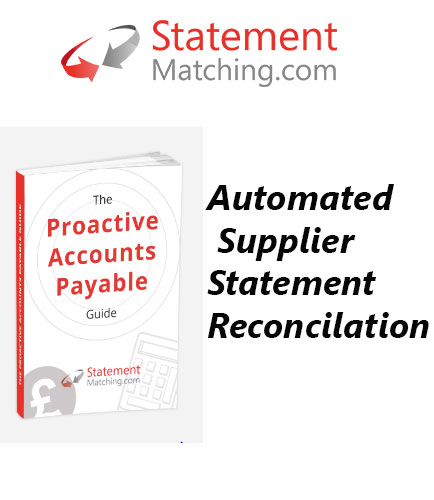
PROCESSING. PLEASE WAIT...


White Paper: Statement Matching
The purpose of this document is to discuss the benefits of supplier statement reconciliation and why Accounts Payable departments should be more proactive.
The Challenge
Accounts Payable resources are limited, so the priority is always to process invoices through to payment on time. Suppliers share the same priority and consume significant AP resources, following up invoice submission with queries to check invoices have been received and when they are going to get paid. Paying any suppliers late increases the workload in AP as suppliers submit duplicate invoices, further queries and ultimately disruption to the business if they put the account on stop.
All of this leads to Accounts Payable being largely a reactive process, which makes it difficult to ever free up enough time to be more proactive and drive efficiencies as a result.
Reconciling supplier statements is a key control that enables Accounts Payable to check if all invoices/credits have been received and if there are any errors on the ledger to resolve in order to pay suppliers accurately and on time. Reconciliations are all too often done on a reactive basis, on request by suppliers or when AP recognises a supplier account needs to be cleared. If Accounts Payable could routinely reconcile their top supplier accounts, proactively on a monthly basis, then all the errors would be resolved before they become an issue - More suppliers will be paid on time, queries and duplicates will reduce which improves relationships with suppliers and reduces workload in AP.
The process of reconciling statements manually is very time consuming and it’s the first thing to suffer in a busy AP department, so we cannot reconcile anywhere near the volume of statements we should be doing. There is no visibility, audit trail or reporting to manage the process, so we don’t know how many or what types of errors there are, whether they have been followed up and what the next actions are.
Automating the process would enable a much higher volumes of statements to be reconciled, significantly improve controls, proactively identify and resolve issues, reduce supplier queries and gain valuable insights into AP processes to identify where controls could be improved to fix root cause.


 2026 All Rights Reserved | by: www.ciowhitepapersreview.com
2026 All Rights Reserved | by: www.ciowhitepapersreview.com